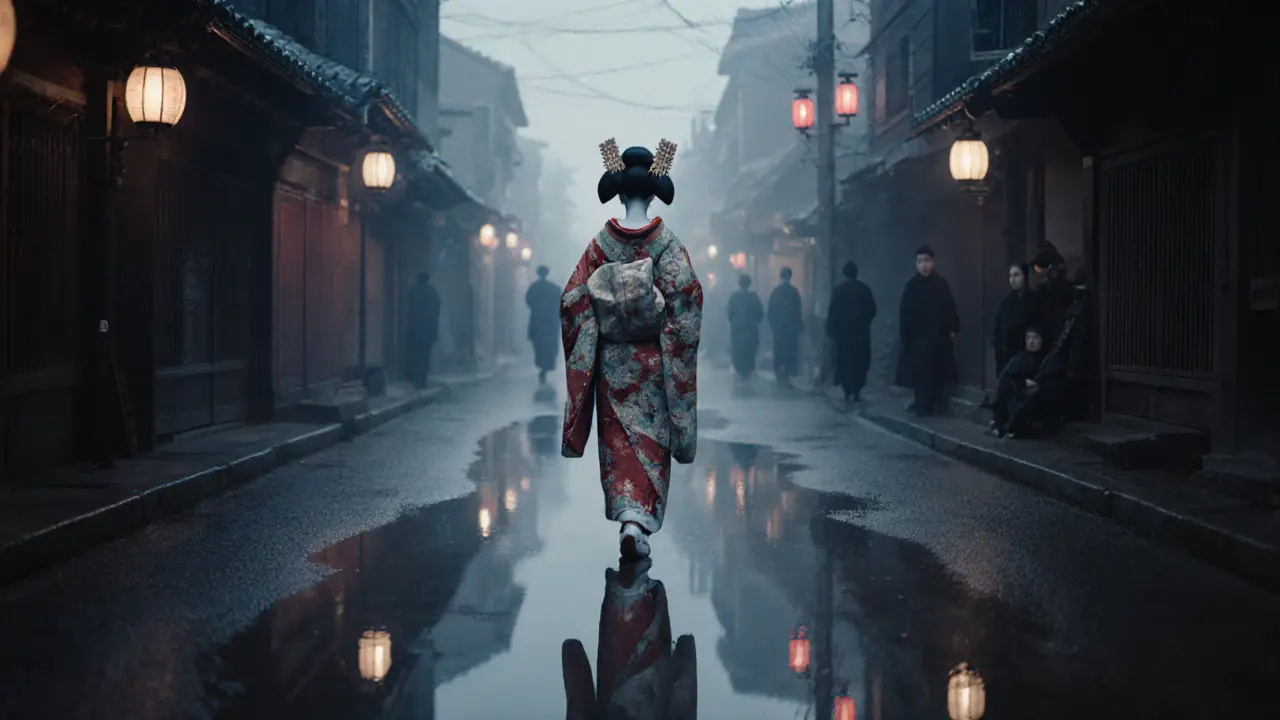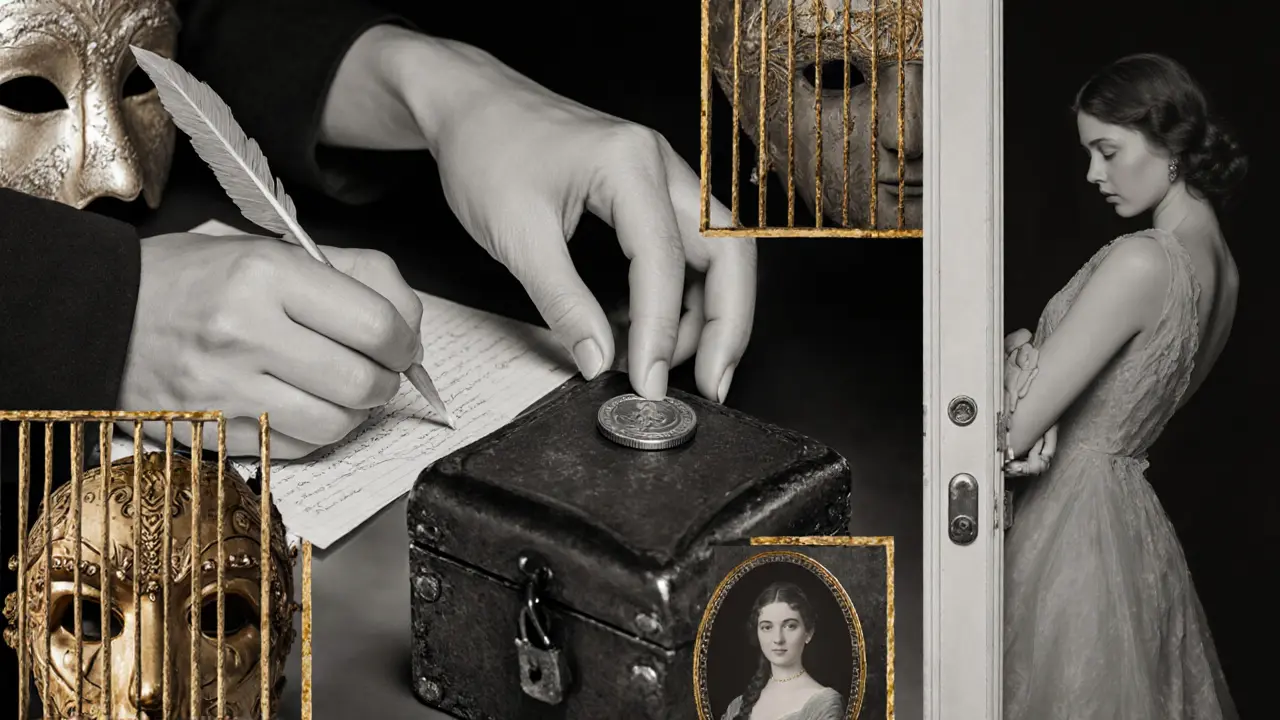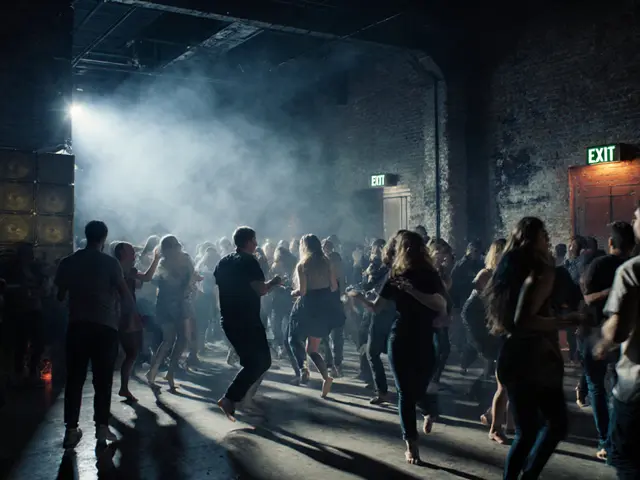When you hear the word courtesan, you might picture a glamorous figure in silk and jewels, entertaining kings and poets. But beneath the glitter lies a far more complex question: were courtesans truly ethical, or was their entire existence a contradiction? The answer isn’t found in moral judgment-it’s hidden in the structures of power, gender, and survival that shaped their lives.
What Exactly Was a Courtesan?
A courtesan wasn’t just a high-end sex worker. She was a trained companion-educated in music, poetry, politics, and conversation. In Renaissance Italy, 18th-century France, and Edo-period Japan, courtesans operated in elite social circles. They weren’t hidden away; they were invited to salons, debated philosophy, and influenced fashion and art.
In Venice, a cortigiana onesta (honest courtesan) had to pass exams in literature and rhetoric before she could be licensed. In Japan, the oiran of the Yoshiwara district underwent years of training in tea ceremony, calligraphy, and the 36 poetic forms of waka. Their value wasn’t in their bodies alone-it was in their minds.
Unlike street prostitutes, courtesans negotiated contracts. They lived in private residences, employed servants, and sometimes owned property. Some amassed fortunes. Veronica Franco, a Venetian courtesan in the 1500s, published poetry, defended herself in court against slander, and lobbied the Senate for women’s rights. Her life wasn’t scandalous-it was strategic.
The Illusion of Choice
Many assume courtesans chose this life freely. That’s partly true-but only if you ignore the alternatives. For most women in pre-modern Europe and Asia, options were brutal: marriage to a stranger, domestic servitude, starvation, or prostitution on the streets. Becoming a courtesan was often the least bad option.
Take Marie du Deffand in 18th-century Paris. She entered the world of courtesans after her husband died and her family cut her off. She didn’t start as a courtesan; she became one after being abandoned by the nobility who once funded her. Her later letters show a woman who understood her power but also felt the weight of her dependence.
There’s a difference between autonomy and survival. A courtesan could walk away from a client. But if she lost her patron, she lost her home, her income, her social standing. Her freedom was conditional-tied to charm, beauty, and the whim of powerful men.
The Ethics of Transactional Intimacy
Is it ethical to trade intimacy for security? That’s the core contradiction. On one hand, courtesans provided emotional labor-listening, comforting, stimulating conversation-that many wives were never expected to give. In return, they received protection, education, and sometimes genuine affection.
Historical records show that many courtesans formed deep, lasting bonds with their patrons. Madame de Pompadour, mistress of Louis XV, wasn’t just a lover-she was his closest advisor. She shaped French art, politics, and even military strategy. She didn’t hide her role; she owned it. And yet, she was still a woman whose influence depended entirely on a man’s favor.
Modern parallels exist. Think of influencers who monetize personal relationships, or executives who rely on networking built on charm and access. The difference? Courtesans had no legal rights, no pensions, no safety nets. Their ethics weren’t about consent-they were about adaptation.

Power, Not Prostitution
The real contradiction isn’t that courtesans sold intimacy. It’s that society demanded they be both object and agent.
Men praised them for their wit, then called them immoral. Women envied their freedom, then shunned them as fallen. Artists painted them as goddesses, then burned their portraits during moral panics. The courtesan was a mirror-reflecting what men wanted to believe about desire, control, and femininity.
She had more power than most women of her time. She could refuse a man. She could write her own contracts. She could leave a patron. But she couldn’t change the system that made her necessary.
That’s the ethical tension: she operated within a corrupt structure, but used it to carve out dignity. Her ethics weren’t black and white-they were gray, negotiated daily, and always fragile.
Courtesans vs. Prostitutes: A False Binary
Historians now reject the clean split between courtesans and prostitutes. The distinction was mostly a class and legal construct, not a moral one.
In London during the 1700s, a woman who entertained wealthy men in Mayfair might be called a courtesan. The same woman, if she worked in a brothel in Whitechapel, was labeled a prostitute. Both did similar work. Both were exploited. The difference? Who paid for the privilege of calling her names.
Even the term "honest courtesan" was propaganda. It was designed to make elite men feel less guilty about their affairs. It didn’t change the fact that all women in this system were vulnerable.
Modern sex workers’ rights movements have reclaimed this history. They argue that the courtesan’s story isn’t about romanticizing exploitation-it’s about recognizing that women have always found ways to survive, even when society refused them other options.

Legacy: The Courtesan as Symbol
Today, the courtesan lives on in movies, novels, and fashion. She’s the seductress in La Traviata, the mysterious beauty in Memoirs of a Geisha, the femme fatale in noir films. But these portrayals erase her complexity.
The real legacy of the courtesan isn’t glamour-it’s resilience. She was a woman who turned constraint into strategy. She used the tools available to her-beauty, intellect, charm-to carve space in a world that gave her little else.
Her ethics weren’t a contradiction. They were a calculation. And in that calculation, she found a kind of freedom few women of her time could claim.
Why This Matters Today
When we ask if courtesan ethics are a contradiction, we’re really asking: Can women be powerful within systems designed to control them?
Today’s gig economy, influencer culture, and transactional dating all echo the courtesan’s dilemma. People trade time, attention, and intimacy for income, status, or survival. The difference? Now we have legal rights, digital platforms, and collective voice.
The courtesan didn’t have those. But she had something else: agency, even when it was limited. She chose, within narrow bounds, how to live. That’s not a contradiction. It’s a quiet act of resistance.
Were courtesans really more respected than prostitutes?
Yes, in some societies, courtesans were treated with more social tolerance than street prostitutes-but not because they were morally superior. They were protected by wealth, education, and connections. A courtesan could attend opera with nobility; a prostitute could be arrested for walking the same street. The difference was class, not character.
Did courtesans ever marry their patrons?
Rarely, and usually only if the patron was a widower with no heirs. Even then, marriage often came with conditions: the woman had to give up her independence, stop seeing other men, and accept a lower social rank. Madame de Maintenon, former mistress of Louis XIV, married him secretly after his wife died-but she never regained the public power she once held.
Were courtesans ever financially independent?
Some were. Veronica Franco owned multiple properties in Venice and invested her earnings in real estate. Others, like the Japanese oiran, saved money to buy their freedom or retire early. But independence was the exception, not the rule. Most courtesans lived paycheck to paycheck, relying on the next patron to avoid ruin.
Did courtesans have any legal rights?
In some places, yes-but only as exceptions. Venice licensed courtesans and required them to wear specific clothing to distinguish them from married women. In France, they could sue for unpaid contracts. But they couldn’t inherit property easily, couldn’t testify against noblemen, and had no say in their own children’s futures. Their rights were performative, not protective.
Why do people romanticize courtesans today?
Romanticizing them lets us avoid confronting uncomfortable truths. We like the idea of a woman who outsmarted the system-because it makes us feel hopeful. But the reality was far messier. Most courtesans didn’t live happily ever after. Many ended up poor, ill, or alone. The myth protects us from seeing how little has changed for women who rely on transactional relationships to survive.







